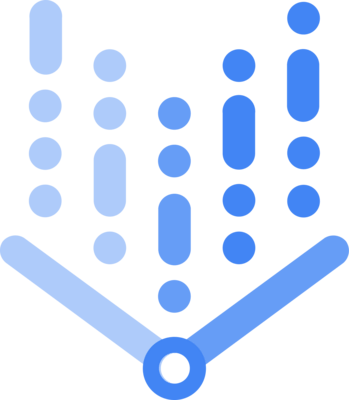Google Vertex AI Vision: Complete Buyer's Guide
Transforming visual search capabilities for online retailers
Google Vertex AI Vision represents Google's enterprise-grade computer vision platform designed to transform how online retailers implement visual search capabilities. The solution combines serverless video processing, multimodal AI integration through Gemini, and pre-trained machine learning models within Google Cloud's infrastructure.
Market Position & Maturity
Market Standing
Google Vertex AI Vision operates from a position of significant market strength within the enterprise computer vision segment, leveraging Google's established cloud infrastructure and AI research capabilities.
Company Maturity
Company maturity indicators demonstrate Google's long-term commitment to AI infrastructure and enterprise solutions. The platform represents part of Google Cloud's broader AI strategy, with substantial ongoing investment in research and development.
Growth Trajectory
Growth trajectory evidence includes documented customer success stories like PopChill's 2.5X click-through improvement[43] and Plateer's cost reduction achievements[50], suggesting strong customer adoption and satisfaction among early enterprise adopters.
Industry Recognition
Industry recognition includes integration with Google's broader AI ecosystem and cloud platform, though specific awards or analyst recognition for Vertex AI Vision specifically require additional validation.
Strategic Partnerships
Strategic partnerships within Google's ecosystem provide significant advantages for enterprises already invested in Google Cloud infrastructure.
Longevity Assessment
Google's financial stability and market position provide strong assurance for enterprise buyers concerned about vendor longevity and continued platform development.
Proof of Capabilities
Customer Evidence
Documented customer success provides compelling evidence of Vertex AI Vision's enterprise capabilities across multiple implementation scenarios. PopChill achieved 2.5X higher click-through rates on recommended items through Vertex AI Search integration, with development completed by one engineer in just two weeks[43].
Quantified Outcomes
Retailers implementing visual search capabilities achieve 27% higher conversion rates and 23% lower return rates[47][51], with SMEs reporting 40% reduction in stock discrepancies and 15x faster inventory counts[38].
Case Study Analysis
Plateer's implementation resulted in cost reduction while improving recommendation refresh cycles from daily to every two hours[50].
Market Validation
Scale evidence demonstrates the platform's enterprise readiness through Google's infrastructure supporting 20 billion monthly Google Lens searches[41][45].
Competitive Wins
Competitive wins against specialized vendors occur primarily in scenarios requiring global scale and multimodal AI capabilities.
Reference Customers
Successful deployments like Neiman Marcus' 'Snap. Find. Shop.' required just 11 weeks by aligning photography standards with ML requirements upfront[38].
AI Technology
Google Vertex AI Vision's technical foundation centers on serverless computer vision architecture that enables real-time video analysis through geo-distributed endpoints capable of ingesting thousands of global streams[41].
Architecture
Integration architecture supports comprehensive ecommerce system connectivity through APIs and cloud-native deployment models.
Primary Competitors
Amazon Rekognition and Azure Custom Vision
Competitive Advantages
Google's massive scale infrastructure supporting 20 billion monthly Google Lens searches[41][45], providing unmatched real-world validation and continuous model improvement.
Market Positioning
Competitive market positioning places Vertex AI Vision as a direct enterprise alternative to Amazon Rekognition and Azure Custom Vision[41][48].
Win/Loss Scenarios
Win scenarios favor Vertex AI Vision when organizations have existing Google Cloud infrastructure reducing integration complexity.
Key Features

Pros & Cons
Use Cases
Pricing
Featured In Articles
Comprehensive analysis of Visual Search for Ecommerce for Ecommerce businesses and online retailers. Expert evaluation of features, pricing, and implementation.
How We Researched This Guide
About This Guide: This comprehensive analysis is based on extensive competitive intelligence and real-world implementation data from leading AI vendors. StayModern updates this guide quarterly to reflect market developments and vendor performance changes.
53+ verified sources per analysis including official documentation, customer reviews, analyst reports, and industry publications.
- • Vendor documentation & whitepapers
- • Customer testimonials & case studies
- • Third-party analyst assessments
- • Industry benchmarking reports
Standardized assessment framework across 8 key dimensions for objective comparison.
- • Technology capabilities & architecture
- • Market position & customer evidence
- • Implementation experience & support
- • Pricing value & competitive position
Research is refreshed every 90 days to capture market changes and new vendor capabilities.
- • New product releases & features
- • Market positioning changes
- • Customer feedback integration
- • Competitive landscape shifts
Every claim is source-linked with direct citations to original materials for verification.
- • Clickable citation links
- • Original source attribution
- • Date stamps for currency
- • Quality score validation
Analysis follows systematic research protocols with consistent evaluation frameworks.
- • Standardized assessment criteria
- • Multi-source verification process
- • Consistent evaluation methodology
- • Quality assurance protocols
Buyer-focused analysis with transparent methodology and factual accuracy commitment.
- • Objective comparative analysis
- • Transparent research methodology
- • Factual accuracy commitment
- • Continuous quality improvement
Quality Commitment: If you find any inaccuracies in our analysis on this page, please contact us at research@staymodern.ai. We're committed to maintaining the highest standards of research integrity and will investigate and correct any issues promptly.